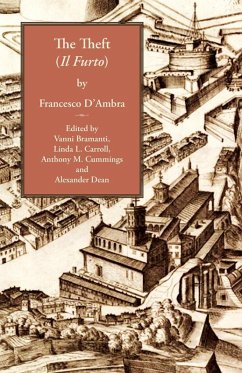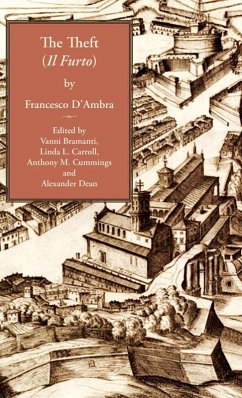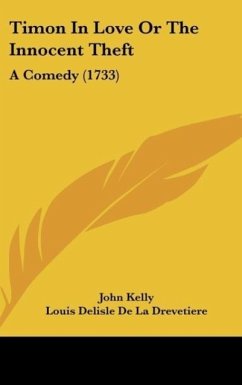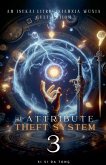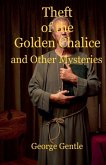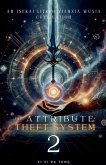Cornelio, an old doctor, has lost his wife and daughter during the Sack of Rome and his son Valerio in a shipwreck. He now wants to marry Camilla, who however loves Mario. To escape, in turn, from marrying Valerio's widow, Mario then suggests that Camilla run away with him. Meanwhile, Aurelia has been captured by pirates from her father, Guicciardo Gualandi, and is in the hands of their leader, Rinuccio Corso. But Gismondo Castrucci, who's in love with her, pretends to be her real father and promises Rinuccio a reward of one hundred and fifty scudi for her release.... This publication presents a new edition, with the first English translation, of the Italian Renaissance comedy The Theft (Il Furto) by Francesco D'Ambra. The Theft was originally performed in Florence in 1544 for the Accademia Fiorentina and for Duke Cosimo I de' Medici of Florence and subsequently grand duke of Tuscany. The Theft is the work of an accomplished and revered dramaturge. Although performances of dramatic works in Florence often featured intermedi - entr'acte musical compositions - in many cases the music composed for them exists only in fragments. But this play is almost unique in the history of the Italian Renaissance theater and music because the intermedio materials survive in their entirety. The volume includes scholarly editions of Francesco D'Ambra's and Ugo Martelli's original Italian texts. Vanni Bramanti uses all the relevant primary sources and provides a critical apparatus to the text and an introduction to the playwright and the play. Linda L. Carroll presents an authoritative facing English annotated translation of the text. It also offers Alexander Dean's edition of the entr'acte music and Anthony M. Cummings' introduction to poet Ugo Martelli's and composer Francesco Corteccia's entr'actes. Dual-language drama. Preface, introductions, plot summary, appendix, notes, and bibliography. 324 pages.
Hinweis: Dieser Artikel kann nur an eine deutsche Lieferadresse ausgeliefert werden.
Hinweis: Dieser Artikel kann nur an eine deutsche Lieferadresse ausgeliefert werden.

